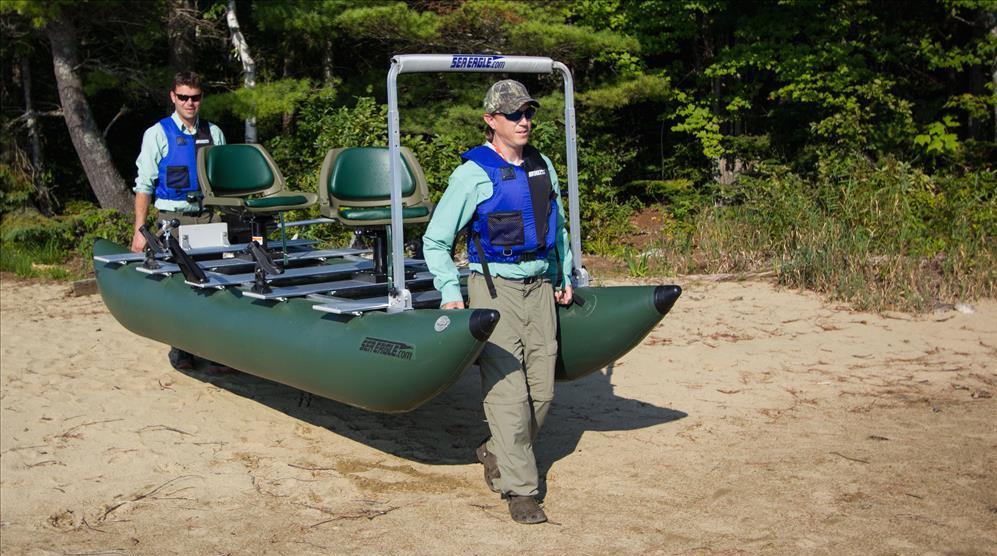
Taking care of an inflatable pontoon boat is actually very easy.
Whether your boat has an aluminum frame or is frameless, there are a few simple steps you can take to make sure your boat stays strong and lasts a very long time.
Steps To Care For Your Boat
In order to maximize the strength and life of your pontoon boat, follow these few steps.
Use 303 Protectant Spray
Most boating stores will sell 303 Protectant Spray. By spraying the pontoons of your boat every once in awhile you will help protect the PVC material from breaking down over time from exposure to UV rays and the elements.
If your boat is frameless and completely made of PVC then spray the entire surface area. If your boat has an aluminum frame then simply spray the pontoon sides.
I use the 303 Protectant Spray on all my inflatable boats including pontoon boats, inflatable kayaks as well as inflatable stand up paddle boards.
It’s essentially like sunscreen for your boat and it will help the material to stay healthy and strong.
303 Protectant Spray costs very little and lasts quite awhile. Use it at least once or twice a season and the material of your boat will last much longer.
Cleaning Your Boat
Over time you may find your boat has dirt or grass stains on it.
Cleaning your boat is easy and will also help protect the material.
Scrubbing it down with some warm water with a natural mild soap will do the trick.
You can also get inflatable boat cleaner at most boating stores which works well too for removing dirt and grime.
If you are out in ocean salt water then you will need to hose off the entire boat with fresh water after each use.
Store Out Of The Elements
After use store your boat out of direct sunlight and away from direct exposure to the elements.
Dry it off first with a towel to stop any mold or mildew from growing if you are deflating your boat or storing it away for a longer period of time.
Then keep it stored in a dry and cool place.
Avoid Dragging Over Sharp Debris
Although this goes without saying for most boats whether inflatable or not, it is wise to avoid dragging it over gravel or sharp debris.
In my experience the majority of these boats are made quite tough and are able to withstand a fair amount of abuse.
However excessive dragging is going to result in some wear and tear over time.
Carrying the boat or pulling it on a wheeled cart to the water is going to help keep the material puncture-free and in good condition.
Check Air Pressure
If you leave your boat inflated in between using it then it will be important to check the air pressure before hitting the water again.
Over several days the air pressure will decrease a little and you may need to top it up.
Also it is important to be aware that air pressure can expand in extreme heat and decrease in extreme cold.
Therefore if out in very hot weather you may need to let a little pressure out over the course of several hours.
On the opposite end, if you are out in extreme colds then you may need to add a little air pressure at some point throughout the day.
Keep these tips in mind and your boat should stay healthy and strong for many years to come.
Still looking for the right boat? Check out our list of 5 best inflatable pontoon boats to find the most popular and the best bang for your buck.
I am concerned about weight put on the pontoons. Is there a chart that offers maximum weight you can put on the pontoons and what is the thickness of PVC used to make the pontoons. Can you put an additional layer of coating to help protect the underwater surface area of each pontoon. Some of the photo’s I see of the pontoon boats in the water indicate the sink to low in the water with the fishermen on board. Also what is the total weight of the pontoon boat say one for just one fisherman like my self who weights around 250 lbs. ringing weight.
Hi Frank, The maximum weight varies by boat but in general they tend to be able to hold a lot of weight. It usually depends on the size and quality of the pontoons. A typical range is between 375 lbs. up to 800 or more lbs. For example the Classic Accessories Colorado pontoon boat, which tends to be a very popular affordable option can hold up to 400 lbs. The Sea Eagle 375 Foldcat can hold up to 650 lbs. If you go with something that has even larger pontoons it will of course hold more weight. For a solo pontoon boat you can count on it holding minimum 375 lbs. up to 500 lbs. Around 400 lbs. to 450 lbs. is very typical.
The thickness of the PVC also really varies by model. If you have a certain one you are looking at I would suggest contacting the company for exact specifications. I have never added an additional layer to the pontoons myself but I don’t see why you couldn’t. I haven’t found it to be necessary but again it might depend on the model.